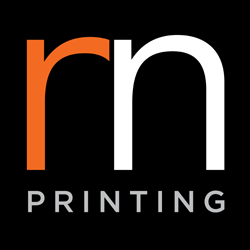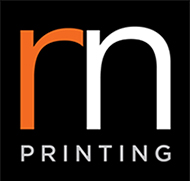What are your booklet binding options?
Select the correct binding option might be confusing, especially with the various methods available and what method is sufficient for your printing requirements. This hopefully can provide some clarification on which binding method to choose:
Saddle stitching
Used for booklets with a small number of pages.
Burst binding
Used for booklets with coated pages.
Perfect binding
Used for booklets with uncoated pages.
PUR binding
Used for both coated and uncoated pages.
PUR is a strong glue that applied to books are used frequently and may need to last for longer periods of time. PUR is used when standard burst or perfect binding cannot offer the extra durability that PUR can offer.
Section sewing
Section sewing is the next step up from PUR binding and is used for books are frequently used and may need to last for longer periods of time. Section sewing offers a more durable finish than PUR (an example of a section sewn book is a street directory.)
If saddle stitch isn’t an option due to the thickness of the book, then it is likely that one of these option will be your next choice. It is important to ask these two questions when deciding which binding option you will choose:
- How frequently will the book be used?
- How long does the book need to last?
Based on the answers, we will make recommendations to which binding option is appropriate for your book.
What is a gate fold?
A gate fold is created by folding the ends of your printed page into the middle so they meet and then folding this folded page in half in the same direction. Your eight page brochure opens just like a gate!
What is a double parallel fold?
A double parallel fold is created by folding your printed page in half and then in half again in the same direction, so the folds are parallel to each other. The result is an eight panel or page brochure – four on the front and four on the back.this contact formwomens replica watchphone case storephone case personalised
There is also a back opening variation, which is similar to a standard double parallel – but the second fold is folded in the opposite direction to the first. Sounds confusing? We fold your printed page in half and then in half again, but in the opposite direction.
What is a 8 page Z fold?
An 8 page Z (concertina) fold is made by back and fourth folds creating a pleated or concertina effect. You’ll finish up with an eight panel or page brochure – four on the front and four on the back.
What is a 8 page roll fold?
An 8 page roll fold folds your printed page inward at one end and then inward again – three times in total. Once we’re done, your brochure has eight panels or pages – four on the front and four on the back.
What is a 6 page Z fold?
A 6 page Z (concertina) fold is created by folding equal parts of a printed page infront and behind itself. Each fold opens in the opposite direction to its neighbour – giving a pleated or concertina effect. Your brochure will have six panels or pages – three on the front and three on the back.
What is a 6 page roll fold?
A 6 page roll fold is made by folding your printed page into thirds, we fold it inward in the same direction not once, but twice. You’ll get a brochure with six panels or pages – three on the front and three on the back.
What is a 12 page Z fold?
A 12 page Z (concertina) fold is made by back and fourth folds creating a pleated or concertina effect. You’ll finish up with an twelve panel or page brochure – six on the front and six on the back.
What is a 12 page roll fold?
A 12 page roll fold folds your printed page inward at one end and then inward again – six times in total. Once we’re done, your brochure has twelve panels or pages – six on the front and six on the back.
What is a 10 page Z fold?
A 10 page concertina fold is made by back and fourth folds creating a pleated or concertina effect. You’ll finish up with an ten panel or page brochure – five on the front and five on the back.
What is a 10 page roll fold?
A 10 page roll fold folds your printed page inward at one end and then inward again – four times in total. Once we’re done, your brochure has ten panels or pages – five on the front and five on the back.
I want my job delivered to multiple destinations.
One point of delivery is always included in our standard quotes. For multiple delivery addresses, the shipping costs can increase significantly – please contact us to discuss your delivery needs and we’ll work out the most economical options.
What happens to my delivery if I’m not home?
We can not leave your print package at a residential address for safety reasons. Our couriers require a signature for proof of delivery. It’s best to have your order delivered to a business address.
What’s the cost of freight?
We include delivery to one metro location anywhere in Australia with every catalogue order. However, if your job needs to be delivered with a quicker turnaround time, to multiple locations or something out of the ordinary then additional charges may apply.
What are your finishing options?
Printing is only half the story. Finishing touches can make all the difference.
From sealing varnishes on all coated stocks, scoring wheels on folding machines, single or double sided laminate to 2D Super Gloss UV, these and more finishing services are all offered.
Here’s a list of finishing options: guillotining, binding, folding (A7 to A1), laminating, creasing, forme cutting, perforating, padding, gluing, gumming, drilling, round cornering, embossing, shrink wrapping, collating, mounting, numbering, and saddle stitching.
Finishing Glossary
Guillotining
Guillotining allows the trimming of individual sheets or stacks of paper after printing through the use of a cutting-blade. Guillotining is often used to ensure precise cutting when you have multiple items to a page, such as gift vouchers.
Binding
Binding refers to the processes by which books and booklets are bound together after printing. Common methods include the saddle-stitch, perfect, and burst-bound techniques.
Folding (A7 – A1)
The process of precisely folding completed print items, which can enhance transportation and presentation. It’s a great time saving option for brochures and other items that would otherwise have to be folded by hand.
Laminating
Laminating adds a thin, transparent plastic coating to printing products. Laminating has both a protective and aesthetic effect. Not only is this process suitable for small cards and other items, it’s also useful for larger workplace notices, maps and diagrams.
Creasing
Creasing refers to the creation of an indentation to make folding printing products easier.
Formecutting
Formecutting refers to a process where a blade is shaped and mounted, then pressed onto stock to produce unique shapes, perforations, or creases.
Perforating
Perforating refers to a process that produces a line of punched holes for a sheet of paper to be torn off or folded.
Pad Printing
Padding refers to a process by which 2D images are printed on to a 3D object. For example, the numbers on a remote control or the letter of a keyboard are produced by a padding process.
Gluing
Some printed products may require gluing together with adhesive after printing.
Super Gloss UV
Super Gloss UV is the process by which a gloss is applied to selected spots on print products for design or colour-enhancement.
Foiling
Foiling allows you to imprint foil on printing products to create unique graphics or a shiny appearance. If you wish to add foiling, get in touch to receive a bespoke quote.
Gumming
Gumming is similar to gluing but unlike gluing, it is not a permanent adhesive option, as the gum becomes sticky when wet.
Drilling
Drilling creates holes in printing materials, which can be useful for binding or other purposes.
Round Cornering
This process allows you to create round corners on your documents and other print materials for a special aesthetic effect.
Embossing
Embossing creates images or design features that are raised to stand out above the surface of the paper. It can add a touch of elegance and a sense of professionalism or sophistication.
Shrink Wrapping
A layer of plastic is applied and shrunk tightly over your print products, for protection and/or for presentation.
Collating
Print products can be collated and ordered according to your specification before dispatch.
Mounting
For better presentation, posters can be mounted on Foamcore, Corflute, Gatorfoam, or Screenboard.
Numbering
Print and apply sequential numbers for individual print material items that are in sets. Choose from different fonts and ink.
Saddle Stitching
This is a popular method for binding books and booklets, whereby the sheets are folded and stapled using saddle wire.
Die Cutting and Punching
The die-cutting process allows you to make multiple numbers of the same shape from a specially shaped blade, much like a cookie cutter.
Burst Binding
Burst binding involves a process in which the spine of each section of material is perforated and adhesive is applied to the perforations.
Perfect Binding
Perfect binding does not use stitching, but utilises an adhesive-based process that glues together the binding edges and cover.
PUR Binding
PUR binding uses a polyurethane reactive adhesive for the process, so your bound item can be laid flat without springing closed.
For our complete Glossary, click here to download.


 1300 483 455
1300 483 455 0418 260 940
0418 260 940 132 Marsden St, Parramatta
132 Marsden St, Parramatta




